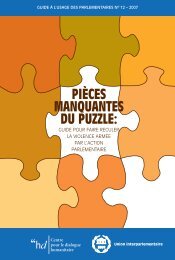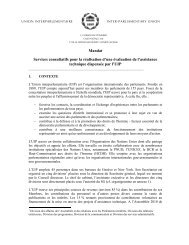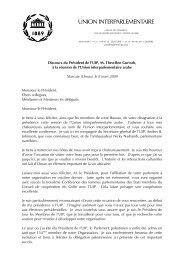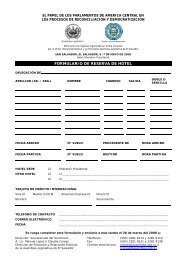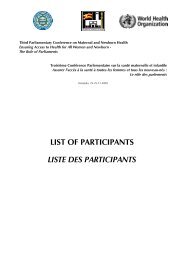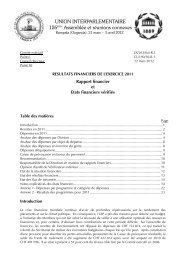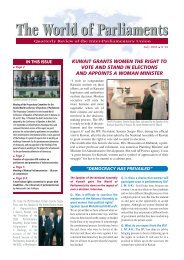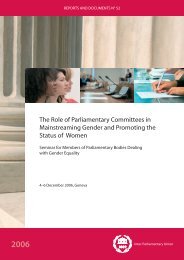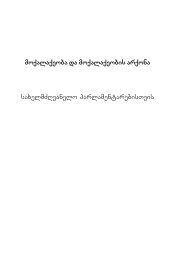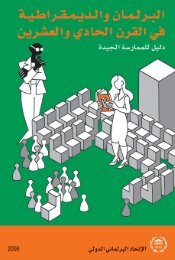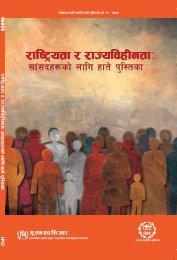MISSING PIECES - Inter-Parliamentary Union
MISSING PIECES - Inter-Parliamentary Union
MISSING PIECES - Inter-Parliamentary Union
You also want an ePaper? Increase the reach of your titles
YUMPU automatically turns print PDFs into web optimized ePapers that Google loves.
<strong>MISSING</strong> <strong>PIECES</strong><br />
tive structures, existing governmental and non-governmental initiatives<br />
on security and related issues, among other areas.<br />
Another example of holistic research for devising initiatives to reduce<br />
gun violence is El Salvador’s ‘Firearms and Violence Study’, undertaken<br />
jointly in 2001 by a number of research centres, the National Bureau of<br />
Statistics and the civilian police. 1 Compelling findings helped shape legislative<br />
and institutional reforms, as well as several outreach and communication<br />
activities to targeted populations (especially young men, gun<br />
owners and manufacturers).<br />
WHAT INFORMATION NEEDS TO BE COLLECTED?<br />
To appropriately design small arms control and violence reduction initiatives,<br />
a range of quantitative and qualitative information should be collected,<br />
such as:<br />
• Types of violence (e.g. political, criminal, sexual violence, organised<br />
crime, intimate partner violence, violence in schools, family violence,<br />
youth gangs) and the prevalence of weapons use<br />
• Social, economic and psychological costs of violence (e.g. to individuals,<br />
families, health systems, policing, public safety, transport, tourism, education,<br />
economic production)<br />
• Levels and type of weapons/ammunition in circulation<br />
• Categories of weapons owners, holders and users<br />
• New sources of guns and supply routes (e.g. legal trade, cross-border<br />
smuggling, poorly secured armouries, illicit production, theft of licensed<br />
weapons), including recycling of weapons and ammunition from one<br />
conflict zone to another<br />
• An assessment of the needs of survivors of armed violence—civilians<br />
and combatants—and existing services and strategies<br />
• An assessment of attitudes and perceptions of guns and insecurity,<br />
including motivations and means to acquire/possess guns (e.g. disaggregated<br />
by age, gender, ethnic identity)<br />
• Vectors of peace (e.g. existing or previous values, civil society groups,<br />
models of leadership, music and arts, sports, etc.)<br />
• Existing and planned laws, policies and processes (e.g. changing national<br />
gun laws; violence prevention processes; poverty reduction strategies;<br />
judicial and rule of law institutional reform)<br />
Based on this information, a set of priorities can be developed in the<br />
NAP. The discrete activities contemplated by an NAP should be as detailed<br />
as possible in terms of what the objectives of each activity are; who is responsible<br />
for implementing and overseeing each activity; where the activity<br />
184



